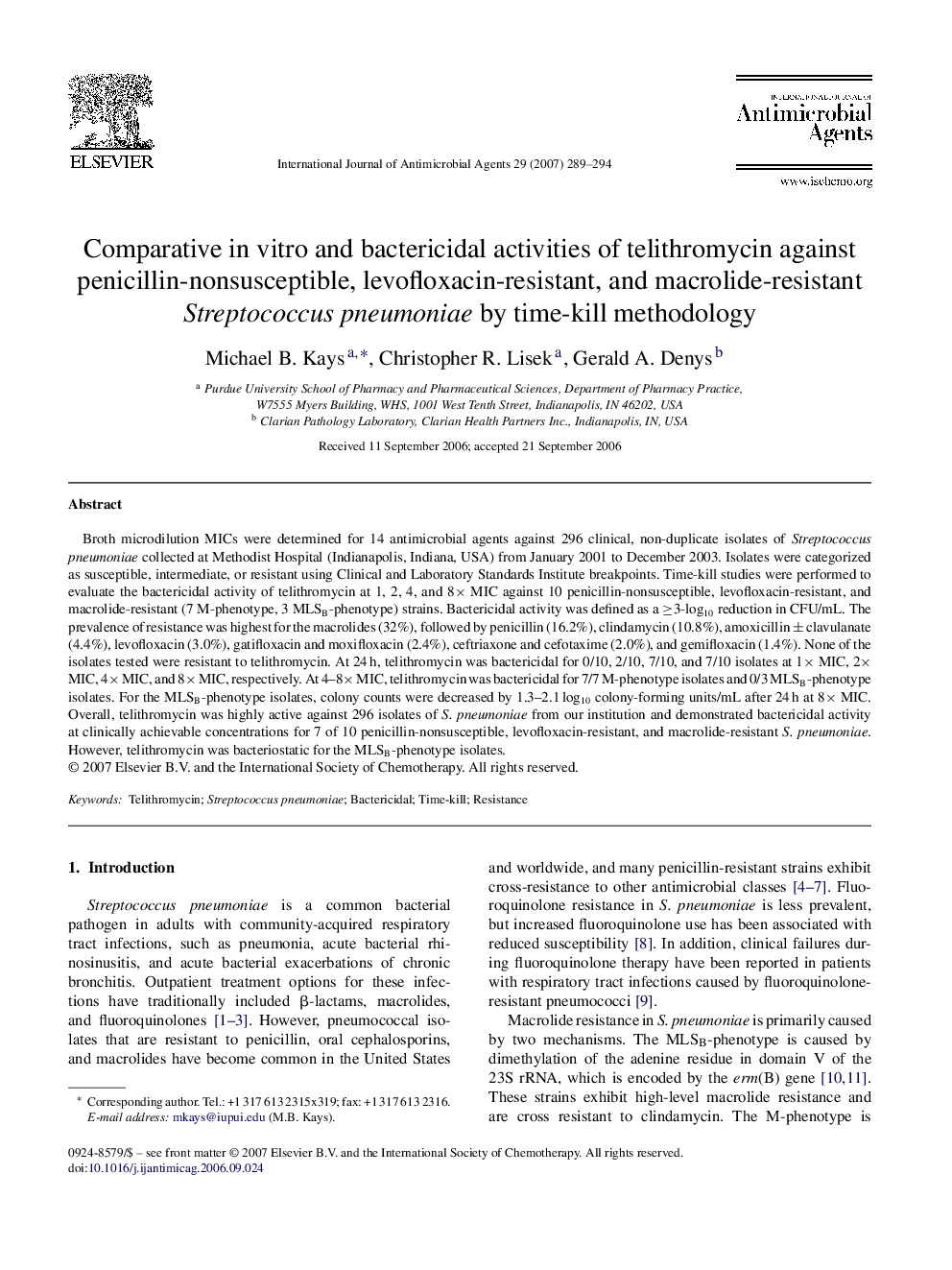| Article ID | Journal | Published Year | Pages | File Type |
|---|---|---|---|---|
| 3361307 | International Journal of Antimicrobial Agents | 2007 | 6 Pages |
Abstract
Broth microdilution MICs were determined for 14 antimicrobial agents against 296 clinical, non-duplicate isolates of Streptococcus pneumoniae collected at Methodist Hospital (Indianapolis, Indiana, USA) from January 2001 to December 2003. Isolates were categorized as susceptible, intermediate, or resistant using Clinical and Laboratory Standards Institute breakpoints. Time-kill studies were performed to evaluate the bactericidal activity of telithromycin at 1, 2, 4, and 8à MIC against 10 penicillin-nonsusceptible, levofloxacin-resistant, and macrolide-resistant (7 M-phenotype, 3 MLSB-phenotype) strains. Bactericidal activity was defined as a â¥3-log10 reduction in CFU/mL. The prevalence of resistance was highest for the macrolides (32%), followed by penicillin (16.2%), clindamycin (10.8%), amoxicillin ± clavulanate (4.4%), levofloxacin (3.0%), gatifloxacin and moxifloxacin (2.4%), ceftriaxone and cefotaxime (2.0%), and gemifloxacin (1.4%). None of the isolates tested were resistant to telithromycin. At 24 h, telithromycin was bactericidal for 0/10, 2/10, 7/10, and 7/10 isolates at 1à MIC, 2à MIC, 4à MIC, and 8à MIC, respectively. At 4-8à MIC, telithromycin was bactericidal for 7/7 M-phenotype isolates and 0/3 MLSB-phenotype isolates. For the MLSB-phenotype isolates, colony counts were decreased by 1.3-2.1 log10 colony-forming units/mL after 24 h at 8à MIC. Overall, telithromycin was highly active against 296 isolates of S. pneumoniae from our institution and demonstrated bactericidal activity at clinically achievable concentrations for 7 of 10 penicillin-nonsusceptible, levofloxacin-resistant, and macrolide-resistant S. pneumoniae. However, telithromycin was bacteriostatic for the MLSB-phenotype isolates.
Related Topics
Life Sciences
Immunology and Microbiology
Applied Microbiology and Biotechnology
Authors
Michael B. Kays, Christopher R. Lisek, Gerald A. Denys,
